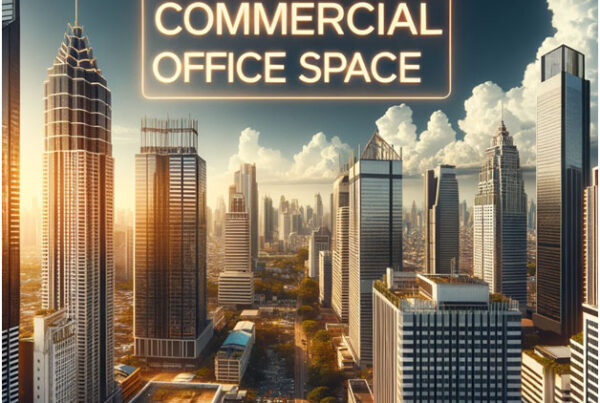
If there’s one thing you take away from this article it’s this — never take a lease for granted. The terms may seem friendly and accommodating up front, but even one misread sentence could lead to years of aggravation and headaches. Signing a lease can be one of the most significant contracts a small business owner ever signs. That means you should approach every lease with care. If not, you might end up regretting having signed that dotted line.
Let’s take a look at ten questions you should ask before you sign a lease.
1) How much is the rent?
When leasing office space, rent is just another part of doing business. But even looking for the cheapest rent that you can possibly find can be challenging.
Generally speaking, rent for commercial spaces is determined by the annual cost per square foot of the space. However, there are around five ways to calculate rent that all use square footage as a basis for comparison.
Gross leases
With a gross lease, the tenant is required to pay a flat monthly amount. Landlords are responsible for insurance, repairs, taxes, and any other expenses that come with operating out of the building.
Net leases
This is an agreement that requires tenants to pay for some or all of the taxes on a property, in addition to rent.
Net-Net leases
On top of paying taxes and rent, the tenant will also be responsible for paying insurance.
Net-Net-Net or Triple Tet leases
These types of leases are usually written for industrial properties. The tenant is not responsible for any of the costs associated with operating out of the building. This includes maintenance and repairs.
Percentage leases
This is a special type of rental where tenants pay a fixed rate plus a percentage of gross income. Percentage leases apply to retailers, with an emphasis on shopping centers and malls.

2) Can you sublease?
Let’s say you move into an office space for rent that’s ideally suited for your business. However, a few years into the lease you’ve grown to twice your size and your current facilities are no longer adequate. You can’t leave without breaking your lease, so what do you do? Simply put, you can find a tenant who meets the same standards that the landlord comes to expect from all of his or her other tenants.
Thus, subleasing occurs when the tenant rents to a subtenant. As mentioned before, the new tenant must meet the standards of the landlord. Therefore, you must vet the tenant to ensure they meet those standards. Furthermore, if your subtenant decides not to pay, you’re still bound by the original lease to pay the rent.
Read the language of your lease carefully. Sometimes the new tenant will pay more than you did for the rent. The question of who gets the extra money might become an issue if you’re not careful. Be upfront with your subleasing privileges from the beginning to avoid issues like this.
3) Who else can move in?
It would be a real pain if a manufacturing plant moved directly next door to your law firm. It would be even worse if a competitor moved in. What would happen if your neighbor brought in the wrong type of crowd — the kind that scared away your customers.
Zoning laws may be more of a blessing than many of us realize. They protect businesses from moving next door to an incompatible neighbor. If you feel your landlord’s limits aren’t stringent enough regarding who can move in next door to you, then you can negotiate for stricter qualifications. However, this may come at a price. The stricter your limits, the harder it will be to find a new tenant if you decide to sublease.
4) What building service do you get?
Before signing a lease for a commercial space for rent, you should identify what services you’re entitled to. For example, every business needs electricity to operate. You also need running water for bathrooms. Let’s look at a couple of points you need to keep in mind:
- The cleanliness of your business is essential for public perception. Therefore, you should request that cleaning services be included as part of the lease. Part of this negotiation should include the frequency at which the building is cleaned and whose responsible for the nuances of house-keeping, such as vacuuming, cleaning the bathrooms and taking out the trash.
- In most cases electricity will be covered by the landlord. However, many landlords set reasonable limits on how much electricity you can use. If you exceed that limit, you may have to pay the difference.
- Heating, ventilation, and air conditioning (HVAC) is also typically covered by the landlord. Regardless, you may still have to do a bit of negotiating
5) Can you renew?
When your lease has expired you have two options: move out or renew. Legally speaking, your landlord doesn’t have to offer you the same space once your lease has expired. That’s why it’s important to negotiate this part of the lease early. You should have a clause that guarantees that you have first rights when your lease has run its course. If not, you’ll have to pay the prevailing market rate to keep the space.
To renew their lease, a tenant typically has to give written notice. A tenant should submit this notice about one year before the expiration of the lease for long-term leases. Short-term leases are around three or four months.
If you don’t want to worry about letting your lease run out accidentally, you can set to renew automatically until you take measures to cancel that arrangement. Automatic renewals are especially beneficial to businesses with multiple branches where it can be challenging to keep track of all of the renewal dates of the separate locations.
6) Who’s responsible for insurance?
As leases are finalized, and tenants prepare to move in, insurance is often overlooked. As a result, the commercial property for rent will likely be covered by a variety of insurance agencies that overlap one another. Therefore, the price is more expensive than it has to be. Furthermore, the landlord will run into all sorts of trouble if catastrophe were to strike.
For example, let’s say a fire rips through the office space for lease. It may take several years for the various insurance agencies to sort out who pays what or what’s covered vs. what isn’t covered.
Generally, landlords have a comprehensive policy on the building to cover liability for common areas such as elevators, stairways, lobbies, bathrooms, etc. They also provide casualty protection for the building itself.
With that being said, landlords are well within their rights to insist that the tenant maintain their own insurance to provide protection from being sued by a customer who may injure themselves due to the conduct of the business.
7) How long will the lease run?
Generally speaking, commercial leases can run anywhere from 3 to 10 years, and you can negotiate the terms with the landlord. Not only should you determine when the lease should begin but also when it ends. Last minute problems tend to pop up if you haven’t verified if the property is ready for you to move in yet.
For example, construction on the building may be taking longer than intended, or you may disagree with the landlord about making your own renovations. You may even run into a situation where the old tenant refuses to move out!
With that being said, your lease should tell you what will happen if your rental space isn’t ready to be occupied by the move in date. It should also spell out how the landlord will accommodate your inconvenience. Be careful about moving out of your old premises too early. If you happen to move out of your old space and your new office space isn’t ready for you to move in yet, you might end up in a situation where you have to operate out of your van until you can figure things out.
8) How much will the rent go up?
Today, costs can be wildly unpredictable; so much so that many landlords insert escalation clauses in their leases to protect themselves. There are many common types of escalation clauses. One type of escalation clause passes on prorated increases in taxes, maintenance, heat, and other direct costs. Other clauses build in regular step-ups in rent over the life of the lease while others raise rent according to the Consumer Price Index.
9) Who pays for improvements
Most modern-day office buildings allow for renovations to be made such as lighting, carpeting, paint, and so on. However, these types of improvements are contingent on what the tenant feels they need to improveand what the landlord will allow. Frankly, improvements are often the most negotiated aspect of any lease. Many tenants and landlords have battled over the issue of improvements to a leased property.
The point of contention typically revolves around the high cost of improvements. For example, even minor renovations such as installing a single new electrical outlet can cost as much as $100 to install.. The cost would be much higher if every outlet in the building needed to be replaced.
Heavy duty carpeting can be even more costly, running as much as $20 per yard. That certainly adds up if you’re trying to carpet an entire building. If you’re looking to hire carpenters, painters, or any other tradesmen they can charge as much as $15 – $30 an hour for their services. Overall, the costs add up quickly.
The best way to convince a landlord to foot the bill for significant improvements to the property is to convince them the renovations will attract future clients even after your lease has run its course. Expect strange requests, such as an unusual paint color and carpeting with weird patterns to be rejected. Such renovations add no value to the property, but this, of course, is dependent on what the landlord allows.
All agreements pertaining to improvements should be put down in writing. Ideally, you should also include an estimate of costs from a contractor and detail floor plans before signing the lease. This document is called a “work letter,” and it also states who owns the improvements made to the property.
For example, improvements such as shelves, office desks, cabinets and the like will typically belong to the landlord regardless of who pays for it. That’s why specifying who owns the improvements is very important.
10) What happens if your landlord goes broke?
This is a worst-case scenario, but it certainly happens from time to time. Let’s say you’ve spent thousands of dollars on renovations to a new office space. All is well for the first few months, but suddenly a representative from the bank shows up and tells you that your five-year lease is void because the bank has foreclosed on the building. They give you the option of staying, but atthree times your original rent. Otherwise, you have thirty days to move out.
This kind of stuff happens, so you need to protect yourself the best way you can. You can avoid such a situation with a standard “recognition” or non-disturbance clause. This ensures that the rental agreement between the tenant and the landlord will continue under any circumstances. Non-disturbance clauses were created to protect the client on the chance that the landlord goes bankrupt.
Featured Image Credit: andibreit/ Pixabay
In Post Image Credit: TeroVesalainen / Pixabay




